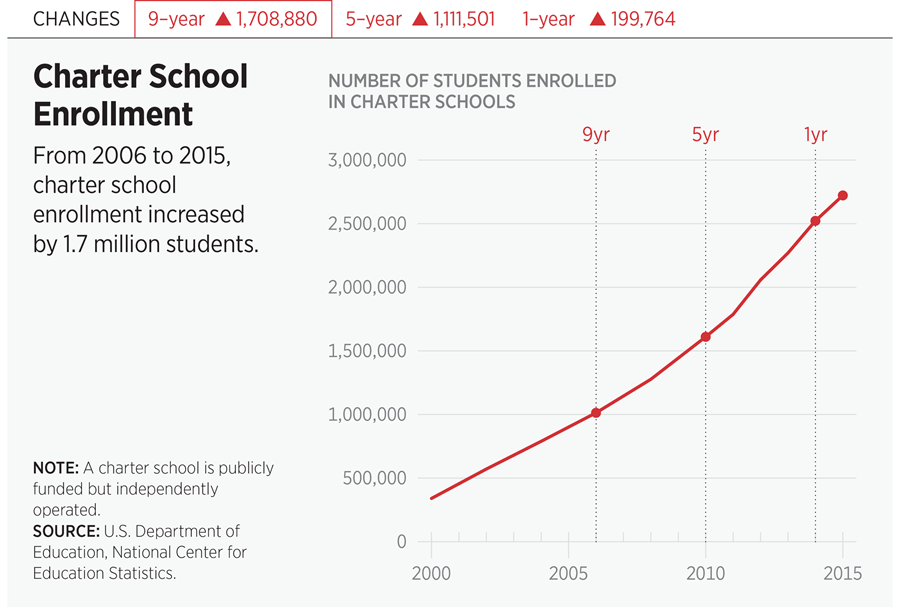
Newswire – March 27, 2018
THE CAUSE AND THE PROMISE OF INNOVATION AND OPPORTUNITY
THE NATIONAL CHARTER SCHOOL LAWS AND RANKINGS. In its 22nd year, this flagship national report of laws represents much more than a trusted source of standings, compelling data and trends in today’s charter school sector — all in a user-friendly online format. The 2018 report takes an unparalleled, holistic approach to evaluating and analyzing the driving forces that have attempted to chip away at the charter school cause and promise of innovation and opportunity for learners at all levels. The report also provides case studies that demonstrate how meaningful change is possible through the impact of research leading to smarter policy.
The data and state-specific case studies in this report find that where strong charter school laws are in place supported by real autonomy, sufficient and secure funding above the political fray and ongoing operational diversity, the charter sector flourishes, which in turn is good for the entire public school sector.
A look at the following three states will give you a sense of what’s most important and what’s most likely to result in meaningful opportunities for families and students.
COLORADO: B
Glows: With no cap, Colorado has seen increased growth and diversity. Colorado doesn’t cap the number of charter schools, which means there is always room for more schools, more diversity of school choices and more innovation.Grows: Colorado has two authorizers, but there’s a catch: Some districts have exclusive authorizing authority, which means that its semi-independent state institute can’t authorize charters in some places. Colorado is already home to some of the leading charter schools in the country — imagine how strong the charter sector would be if districts didn’t have such exclusive authority!
“Any solution starts with recognizing that charter schools can only reinvent public education if they operate outside of the traditional system. The best people to build great charter schools, district charter portfolios, and statewide charter sectors are visionary educators and reform-minded entrepreneurs passionate about enabling charters to fulfill their distinct mission.” —Benjamin Lindquist, The Colorado League of Charter Schools
MISSOURI: C
Glows: Missouri allows multiple entities to authorize charter schools, and charters receive a lot of the operational autonomy they need to innovate. Yet…
Grows: The state limits the establishment of charters to only the two major urban centers (St. Louis and Kansas City). This geographic limitation places a de facto cap on charter school growth and prevents charter operators from meeting demand in other parts of the state.
NEVADA: C
Glows: Nevada’s charter school law creates the opportunity for a robust and diverse charter sector. However…Grows: The current situation in Nevada is a case study in how a well-intentioned law can go awry in practice. The Nevada Public Charter School Authority puts bureaucratic burdens on charters and has been slow to replicate even the best charter schools in the state. This regulatory environment limits autonomy and growth.
“The point is that parents and students have real choice when we give charters the autonomy to be different.” —Michael Q. McShane, EdCHOICE
WHY IS THIS NATIONAL CHARTER SCHOOL LAW RANKING AND SCORECARD MORE TRUSTED, ACCURATE AND VERIFIABLE THAN ANY OTHER RANKING MODEL IN THE COUNTRY? The Essential Guide to Charter School Laws assesses how well states adhere to the principles of the charter school movement by looking at both policy and practice. CER’s work measures states on how and to what degree they allow for the proliferation of innovation and diversity, which are the tenets of the original charter idea.
DID YOU KNOW? That while charter school enrollment has nearly tripled over the past 10 years, it’s slowed considerably in the past two. Here’s a graph from the Heritage Foundation:












